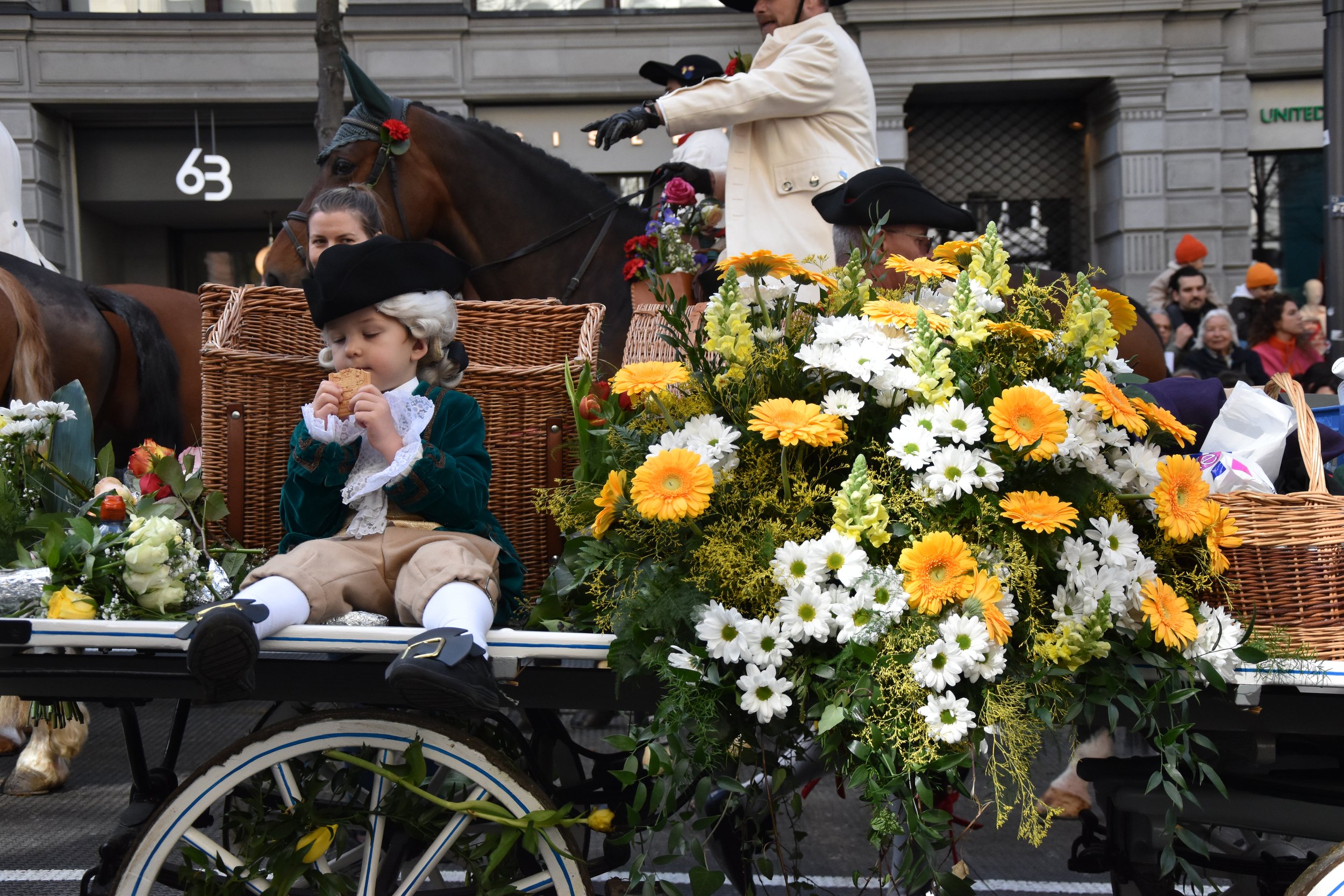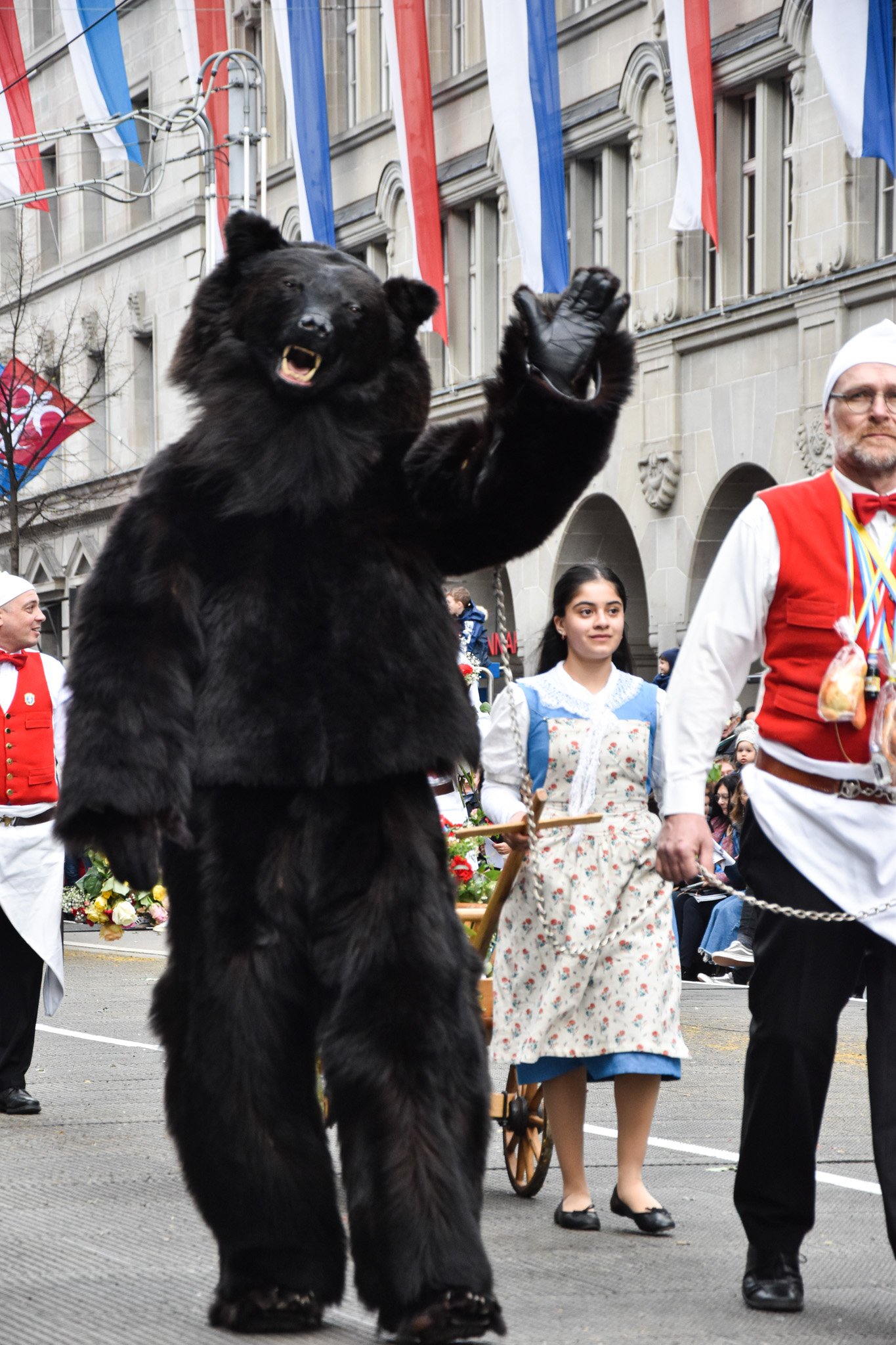Sechseläuten, a Traditional Holiday in Zurich
Two weeks ago we celebrated the traditional holiday called Sechseläuten (which basically means the ringing of the bells at six) in Zurich. The festivities always take place on the 3rd weekend in April, kicking off with a colorful parade of the local guilds lasting from 3PM - 6PM. Then everyone gathers to watch the burning of a straw Snowman (called the “Böögg”) atop a pile of wood. I always love watching the parade as everyone is dressed in an old fashioned way to remind the people of the old times. But let me explain how this entire holiday came to be:
Sechseläuten was put together from several different traditions. In the 14th century the people grouped up with their fellow craftsmen in guilds. Since the end of the 19th century these guilds have lost their political influence and instead function more like clubs. They often organise different parties, the parade of Sechseläuten, and take care of several ancient buildings in town. The parade consists of 25 guilds and a total of 3,500 people marching in matching clothes, props and sometimes even marching bands. Every year Zurich invites a guest state to come and participate in the parade.
At 6PM all the guilds march to the Sechseläutenplatz right by the Zurich Opera House. Together with the spectators they watch the burning of the Böögg (the snowman). The longer it takes for the explosive packed head of the Böögg to fly off, the less nice the summer will be. Traditionally, the men would burn straw scarecrow-sized dolls but these individual celebrations eventually combined to from Sechseläuten. The “doll” could show up in different shapes and forms until they finally decided to leave the Snowman as the symbol.
But why is it called Sechseläuten? That’s a good question and I acutally only recently found out the reason. (Thank you children’s English book) In the 16th century the people would work until sunset during the winter months. Since the summer nights could be really long there was a rule, that people only had to work until 6 o’clock, which is when the bell rang and it announced the end of the work day.
So as you can see, the entire holiday was put together from different traditions and Sechseläuten as we know it today didn’t exist until 1900. I love the traditional aspects from it and a lot of family and friends join me to watch the parade.
The Susslife Tip: If you don’t want to pay for seating, stand behind a family with lots of little kids. Chances are good they will not watch the parade for 3 hours and so you can take over their seats.














